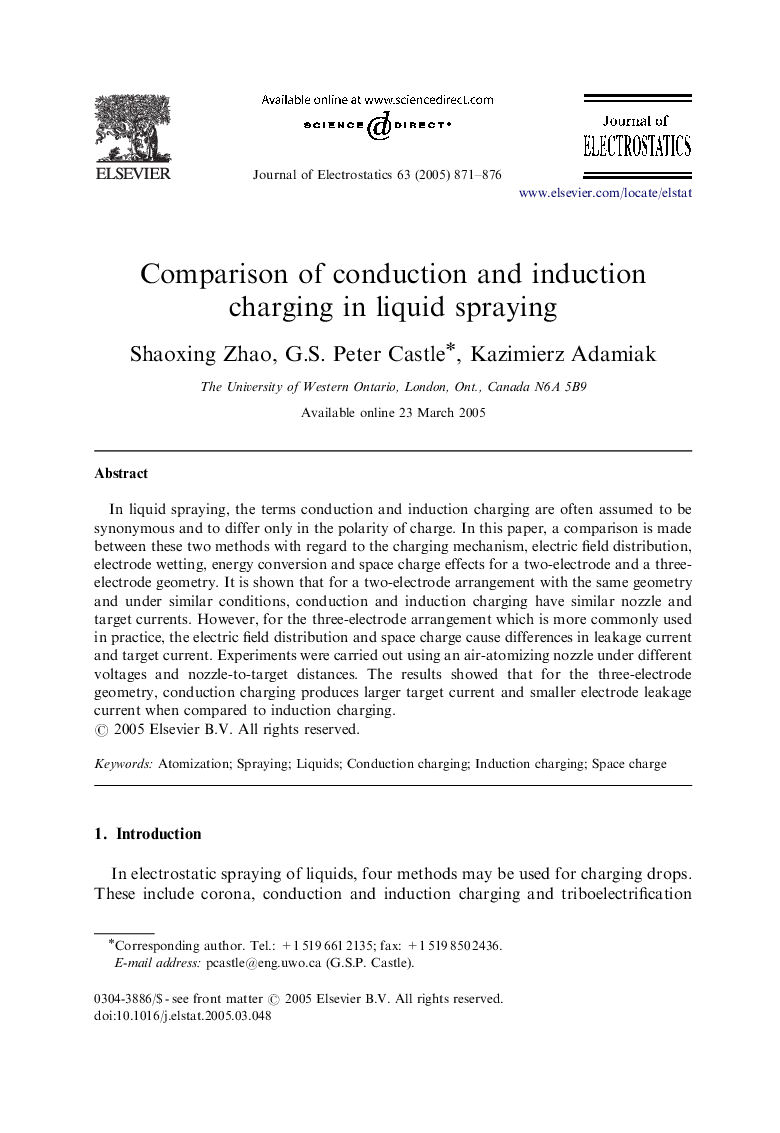| Article ID | Journal | Published Year | Pages | File Type |
|---|---|---|---|---|
| 9698818 | Journal of Electrostatics | 2005 | 6 Pages |
Abstract
In liquid spraying, the terms conduction and induction charging are often assumed to be synonymous and to differ only in the polarity of charge. In this paper, a comparison is made between these two methods with regard to the charging mechanism, electric field distribution, electrode wetting, energy conversion and space charge effects for a two-electrode and a three-electrode geometry. It is shown that for a two-electrode arrangement with the same geometry and under similar conditions, conduction and induction charging have similar nozzle and target currents. However, for the three-electrode arrangement which is more commonly used in practice, the electric field distribution and space charge cause differences in leakage current and target current. Experiments were carried out using an air-atomizing nozzle under different voltages and nozzle-to-target distances. The results showed that for the three-electrode geometry, conduction charging produces larger target current and smaller electrode leakage current when compared to induction charging.
Related Topics
Physical Sciences and Engineering
Engineering
Electrical and Electronic Engineering
Authors
Shaoxing Zhao, G.S. Peter Castle, Kazimierz Adamiak,
